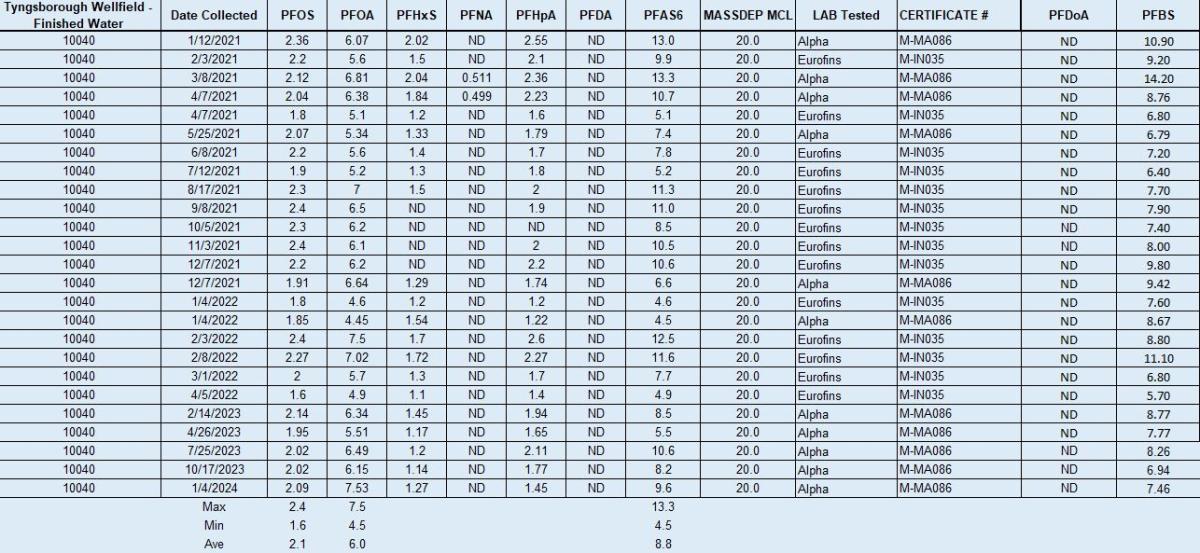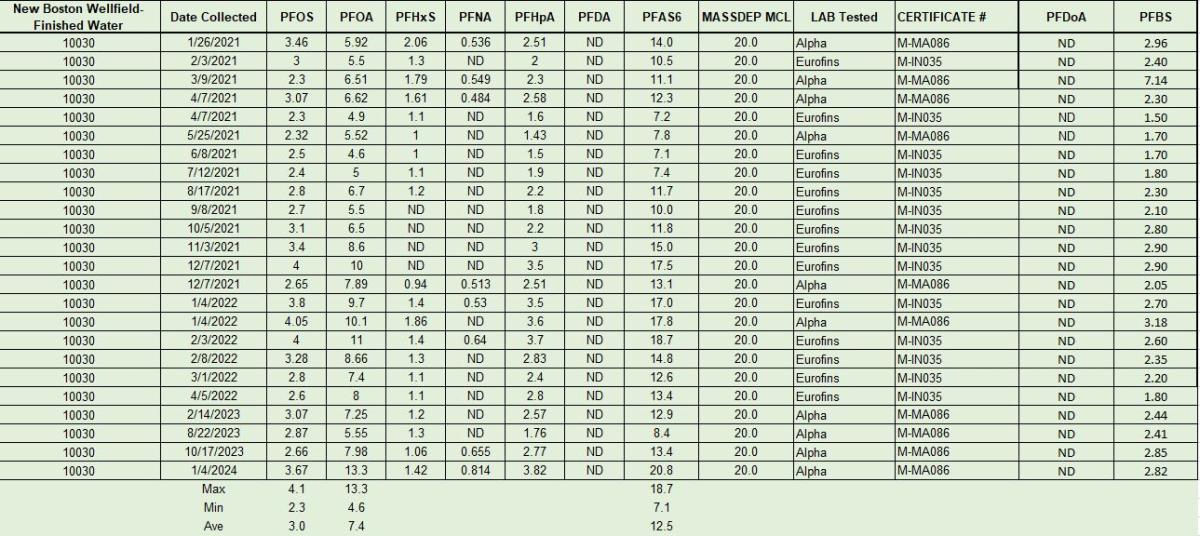PFAS
New Federal Drinking Water Standard for Per- and Polyfluoroalkyl Substances
Dracut Water Supply District (DWSD) has been closely monitoring a family of chemicals called per- and polyfluoroalkyl substances (PFAS) that have been detected in some public water supplies in Massachusetts and across the nation. PFAS were widely used in manufacturing, many consumer products, and firefighting foam. When discarded, PFAS has leached from these products and into water sources. The presence of PFAS is the result of pollution and not any action taken by our water system.
Massachusetts passed a drinking water standard for PFAS in October of 2020 which applies only to Public Water Systems (PWS) in Massachusetts. On Wednesday, April 10th, the United States Environmental Protection Agency (EPA) announced that they have finalized a new federal National Primary Drinking Water Rule for PFAS, which will apply to PWS across the country. EPA’s Maximum Contaminant Levels for PFAS compounds, PFOA and PFOS, at 4 parts per trillion (ppt), and PFNA, PFHxS, and GenX Chemicals at 10 ppt, are quite a bit lower than the Massachusetts Maximum Contaminant Level of 20 ppt for the sum of six PFAS compounds, which is referred to as PFAS6. DWSD has been monitoring for PFAS since the Massachusetts standard took effect, see results in the below charts.
In Massachusetts, the Department of Environmental Protection (MassDEP) administers the federal Safe Drinking Water Act. MassDEP has to be at least as stringent with their standard as EPA and will have up to two years to adopt the new lower standard to comply with EPA’s primacy requirements. MassDEP has indicated they will convene a stakeholder group to advise them on adoption of new standards (MassDEP could choose to be more stringent than EPA or could act more quickly to adopt the standards than EPA allows). We expect to learn more about MassDEP’s process in the coming weeks.
Now that a federal standard has been adopted, PWS across the country will be grappling with how to come into compliance with the new standards. What does this mean for our water system? Since we are over the MassDEP standard now, we have been working with our engineers to investigate solutions. We will now work to make sure that the solutions we are pursuing will meet any new lower standard.
We are committed to providing consumers with safe and reliable water and are working diligently to develop a plan that ensures the public water supply meets the new drinking water standards,’’ said [insert name and title of PWS leader]. “We will keep the public informed as we work with the state to develop, design and implement the most expedient, effective and fiscally responsible solution to this emerging chemical of concern.
The research and understanding into potential health impacts of PFAS continues to evolve. When a water source contains PFAS above the Massachusetts standard, the Massachusetts Department of Environmental Protection recommends consumers in a sensitive subgroup (pregnant or nursing women, infants and people diagnosed by their health care provider to have a compromised immune system), are advised not to consume, drink, or cook with water when the level of PFAS6 is above 20 ppt. As our scientific understanding evolves, further guidance may be issued. Consumers concerned about potential health effects of PFAS should consult a medical professional.



